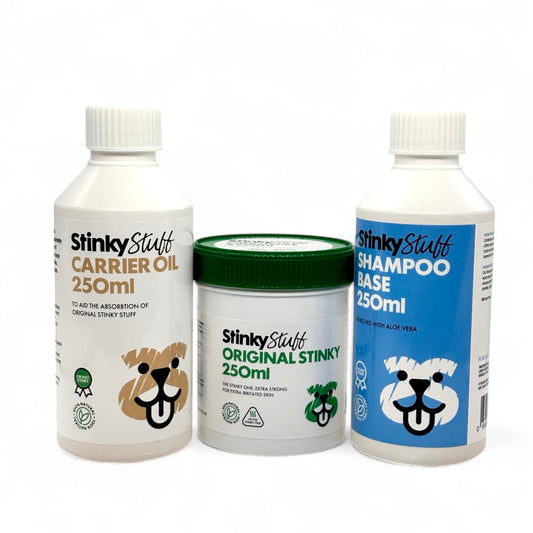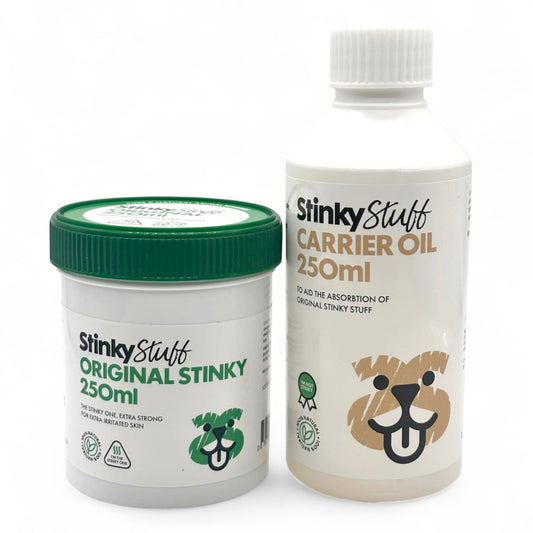Collection: Dog Products
Not sure what your dog needs?
🐾 Take our simple product guide
-
Santa Paws Christmas Dog Shampoo & Perfume Gift Set
Regular price £12.99 GBPRegular priceUnit price / per£19.99 GBPSale price £12.99 GBPSale -
Ear Stuff – Natural Ear Drops for Everyday Ear Comfort
Regular price £19.99 GBPRegular priceUnit price / per£19.99 GBPSale price £19.99 GBP -
Food Stuff – Daily Skin & Paw Food Supplement - Buy 1 Get 1 Free
Regular price £19.99 GBPRegular priceUnit price / per£19.99 GBPSale price £19.99 GBP -
Stinky Stuff Itchy Dog Duo – Natural Ear and Skin Relief for Dogs
Regular price £19.99 GBPRegular priceUnit price / per -
Itchy Dog Relief Bundle – Soothe itching and irritation
Regular price £25.00 GBPRegular priceUnit price / per£50.00 GBPSale price £25.00 GBPSale -
Itchy Dog Relief Bundle Standard Size – Soothe itching and irritation
Regular price £33.00 GBPRegular priceUnit price / per£66.00 GBPSale price £33.00 GBPSale -
Food Stuff 250ml & Free Dog Stuff 45g - Soothe Itchy Irritated Skin
Regular price £30.00 GBPRegular priceUnit price / per -
Food Stuff – Daily Skin & Paw Food Supplement
Regular price From £30.00 GBPRegular priceUnit price / per -
Dog Stuff – Natural Dog Balm for Dry, Irritated Skin
Regular price From £17.99 GBPRegular priceUnit price / per -
Dog Stuff & Shampoo for Itchy Skin
Regular price From £22.99 GBPRegular priceUnit price / per -
Flea Stuff – Natural Flea Shampoo for Dogs
Regular price £30.00 GBPRegular priceUnit price / per -
Original Stinky Stuff Complete Pack
Regular price £29.99 GBPRegular priceUnit price / per -
Stinky Stuff Original Oil Combo Pack
Regular price £22.95 GBPRegular priceUnit price / per£25.25 GBPSale price £22.95 GBPSale













